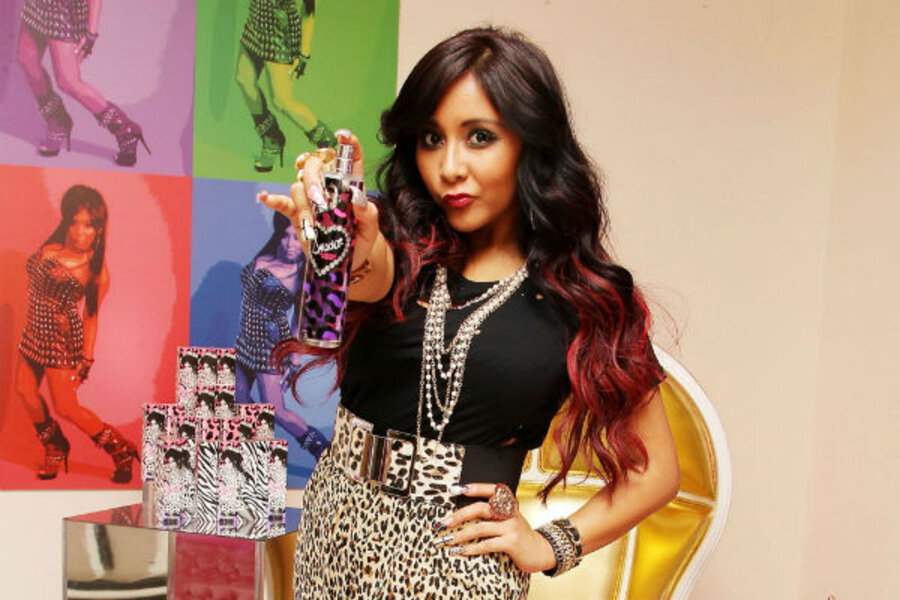Snooki and Miley Cyrus: helping teens evaluate pop star behavior
Loading...
Miley Cyrus engaged at age 19. Snooki pregnant before marriage. “Teen Mom” star Amber Portwood headed to jail.
And … who cares?
We’ve been thinking about that question a good bit recently.
With the ever-buzzing Internet, facilitated by handheld smart devices, teens are more likely than ever to catch a steady flow of celebrity news. And much of the time, the messaging behind that news is not exactly what parents would prefer. (Think Britney, folks.)
Sure, there’s nothing necessarily wrong with Cyrus’ early engagement, or Snooki’s premarital pregnancy. (We can probably all agree that Ms. Portwood’s jail sentence is too bad.) But there’s a lot of evidence pointing to the challenges associated with these behavior patterns in society at large. Statistically, the younger people are when they get married the more likely those marriages are to end. Statistically, unwed mothers are more likely to have economic troubles.
But does any of that matter? Aren’t teens (and younger children) smart enough to know the difference between celebrity glitz and real life?
The other day I called up child development expert Diane Levin to ask her opinion.
Ms. Levin, a professor at Wheelock College in Boston, has spent her career exploring the impact of media on children.
I asked her whether Miley’s engagement news, to take one example, means that we’ll soon see a rush of teenage marriages.
“It’s not so purely black and white,” she says. “It’s not like the kids see something and they do it.”
The issue, she says, is that constant pop culture messaging can shift children’s place on what she describes as a continuum. Take violence in the media. Just because a child watches 100 murders a week on television doesn’t mean that child will end up killing someone. But if you place the child on a continuum of aggressive behavior, studies have shown that the television violence moves the child further toward the aggressive end.
This shift happens differently for different individuals. But for those already vulnerable to a certain type of behavior – whether it’s aggression or teen pregnancy – a barrage of pop culture messaging can tip the scales. For others, it shifts, however subtly, the concept of “normal.”
“Once the people who have been glorified are modeling something, it is going to have some effect,” she says. “The more of it [teens] see, the more it becomes their culture, the more it becomes normalized.”
(You can see this same pattern in the sexualization of children. The celebrity “sexy” culture trickles down to the masses to the point that padded bras for 7-year-olds seems “normal.” To some people, at least.)
But parents don’t have to despair – or forbid their kids from following the travails of Miley et al.
Children who are what Levin describes as “interconnected," or who have meaningful in-person (as opposed to screen) relationships with peers, family members and others, tend to resist celebrity culture more so than those who are more isolated. So do children whose parents talk with them about what they’re seeing in the pop culture world.
“Kids have two boxes in their heads,” she says. “There’s the pop culture box and the family culture box.”
The parents’ job is to connect those boxes, to help children apply the values they learn at home to the world of pop culture, which might otherwise have its own set of values. Levin says that parents do themselves (and their kids) a world of good when they start nonjudgmental conversations with their kids about the behavior of celebrities, or ask what their children think about the news they are seeing.
Also important, she says, is to be informed. If you don’t know what’s going on in your kid’s world, then it’s pretty hard to engage her about it.
So bring on Snooki. There’s something to this celebrity news after all.






